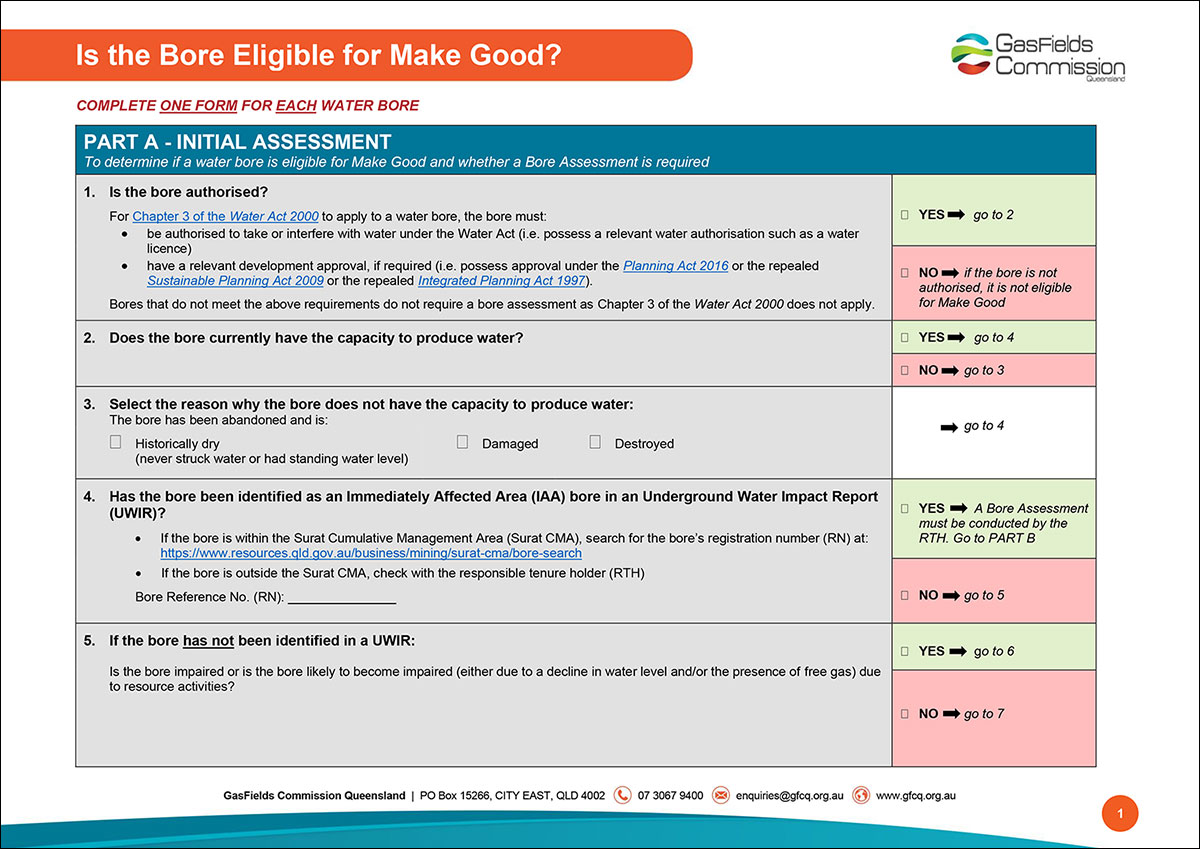Bore Assessments
Bore assessments are undertaken to assess the capacity of a water bore and to establish whether or not the bore has, or is likely to have, an impaired capacity due to resource activity.
Resource companies undertake bore assessments to determine if make good measures are required as part of a make good agreement with the bore owner.
When undertaking a bore assessment, the resource company will need to collect information on the water bore such as:
- details of the bore construction (drill date and drilling company, etc)
- photographs, details, condition and rate of the bore pump
- repair history
- purpose and use of the bore
- bore capacity and status
- water level and pressure
- water quality
Bore Assessment Checklist
Use the GasFields Commission’s Bore Assessment Checklist to determine if a private bore may be eligible for make good measures and if a bore assessment is required. This checklist will also outline the process for undertaking a bore assessment, as well as the actions each party should be responsible for during this process.
Important resources
- Options for Dispute Resolution
- Make Good Agreement Process
- GFCQ Baseline Assessment Checklist
- GFCQ Bore Assessment Checklist
- GFCQ Fact sheet: Make Good Agreements for bore owners
- Underground Water Impact Reports
- FAQs – Make Good Obligations (Department of Environment and Science)
- Make Good Agreements and Quick Guide – Make Good Obligations (Department of Environment and Science)
- Underground water – Baseline Assessment Plans, Baseline Assessment Guidelines, Bore Assessments, Bore Assessment Guidelines (Department of Environment and Science)
- ‘Coal Seam Gas Information for Community and Landholders’ (Department of Environment and Science)
- Current UWIR for the Surat CMA (Office of Groundwater Impact Assessment)
- Other Approved UWIRs (Department of Environment and Science)
- Is your bore predicted to be impacted? (Office of Groundwater Impact Assessment)
- Water Monitoring Information Portal (Queensland Government)

